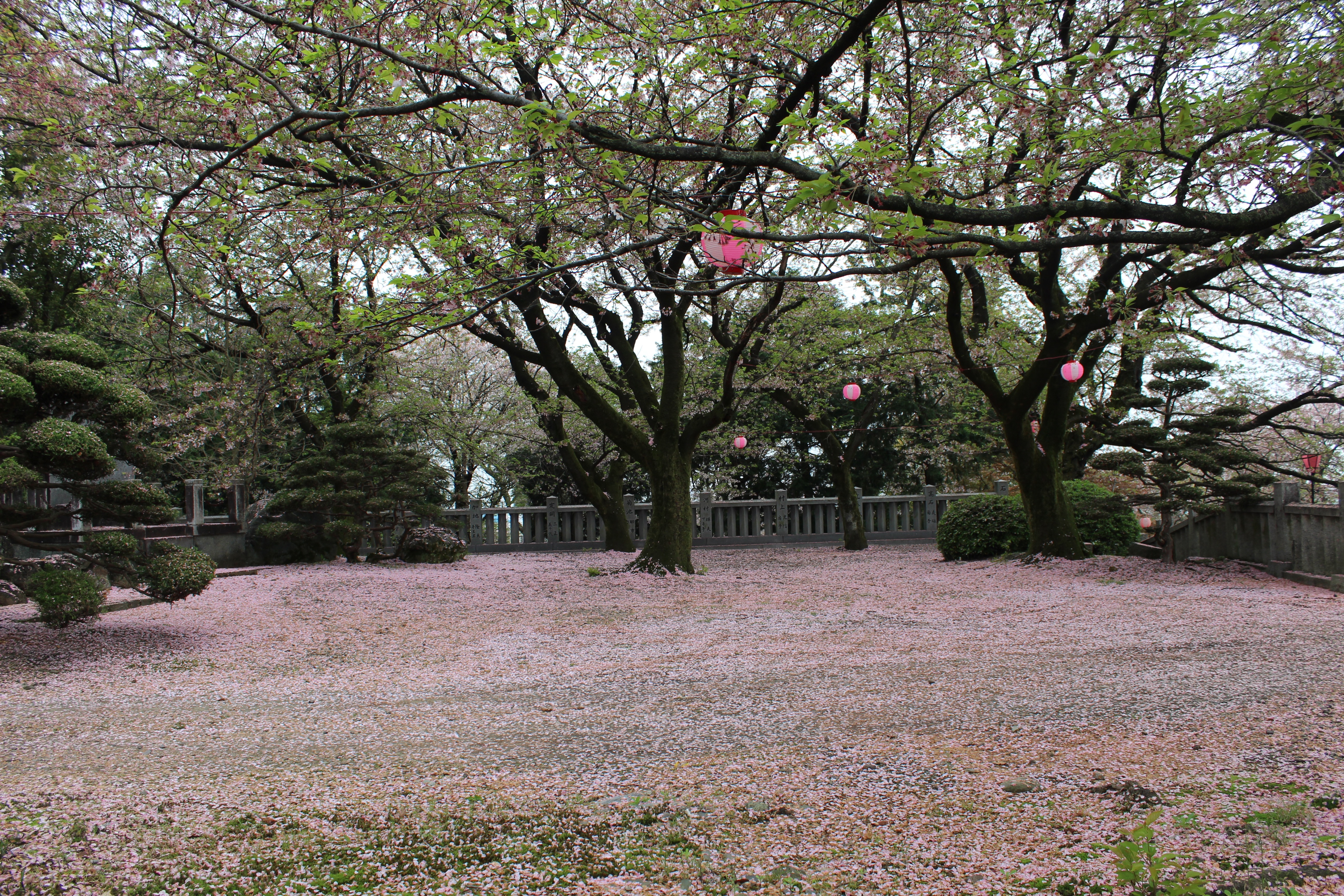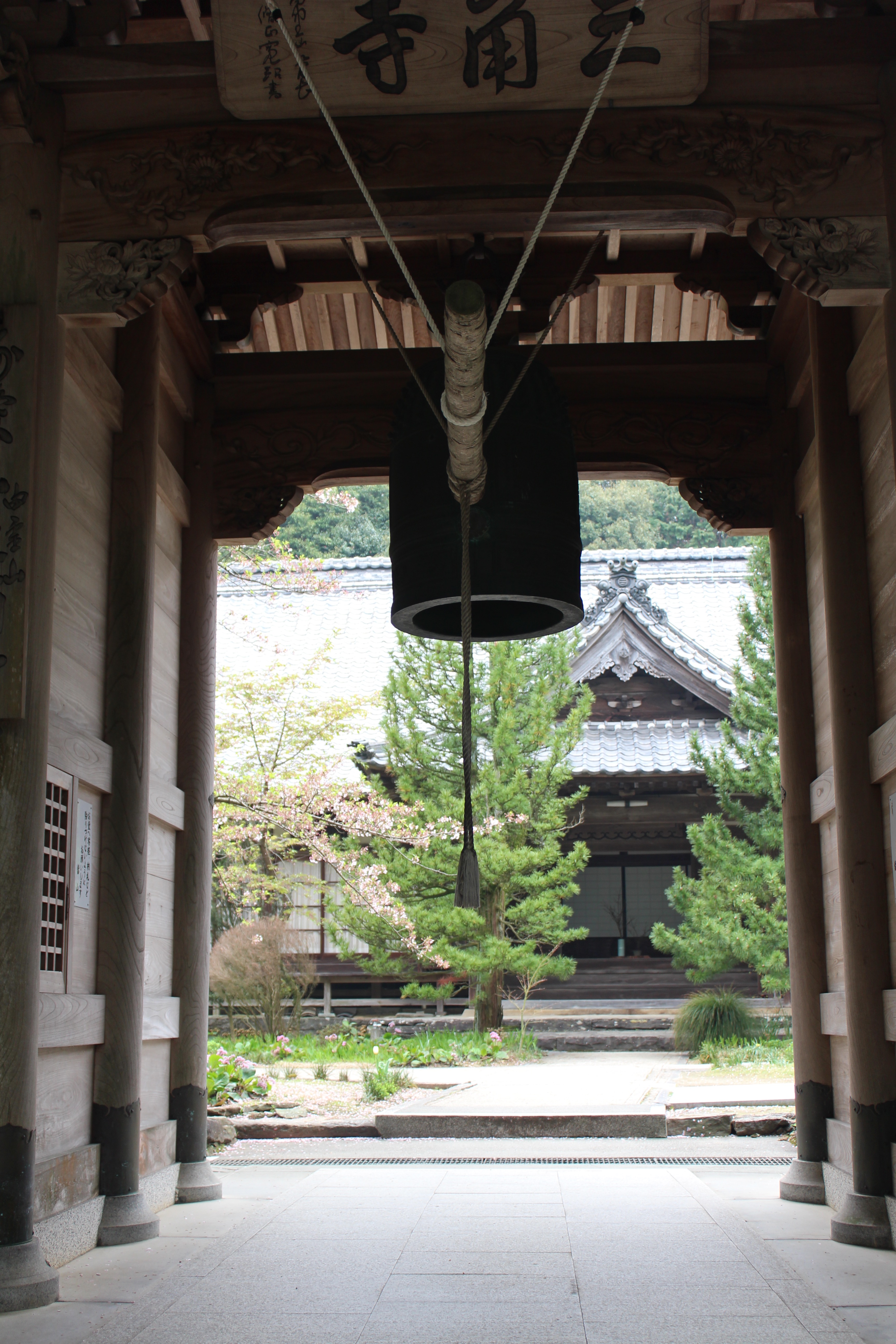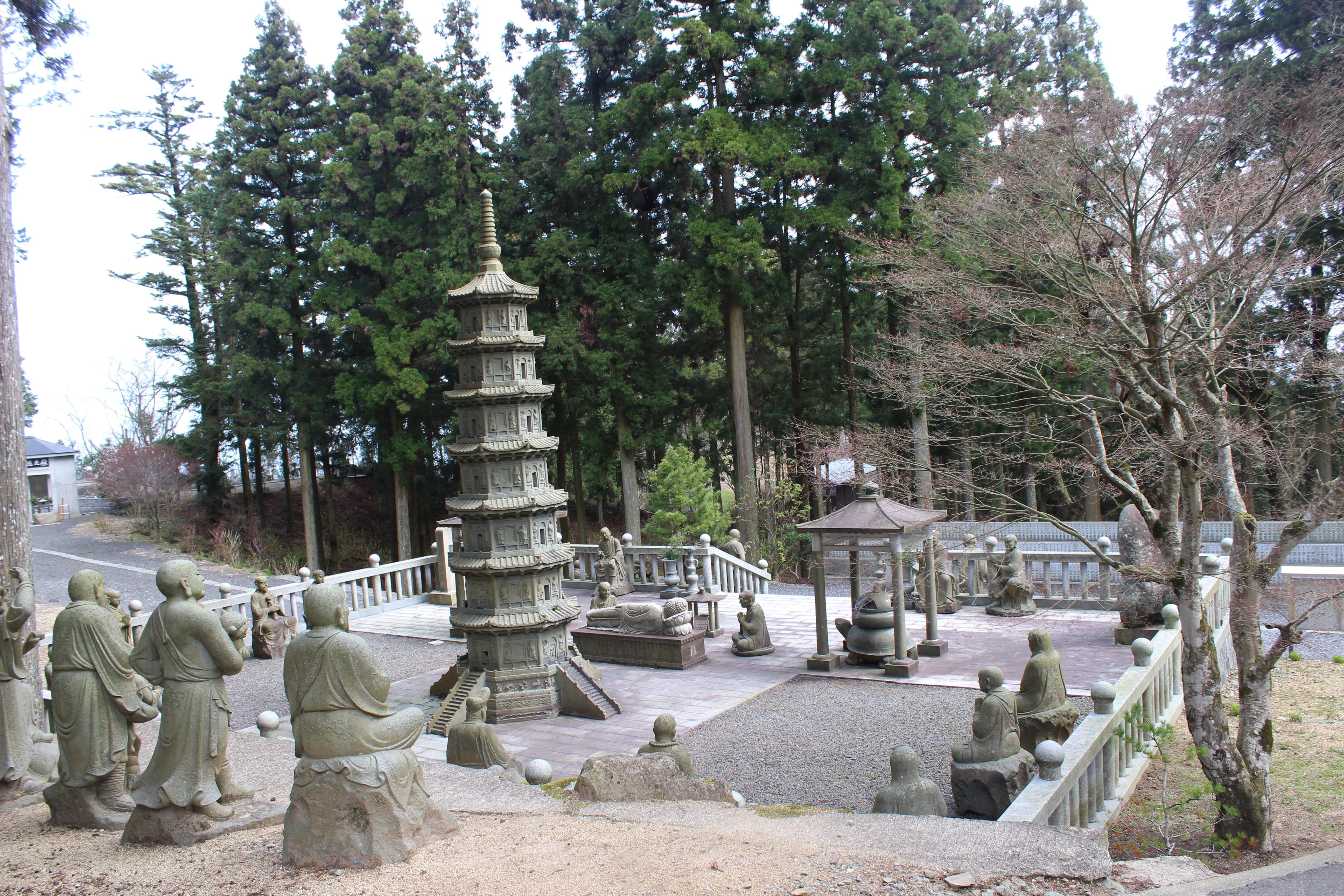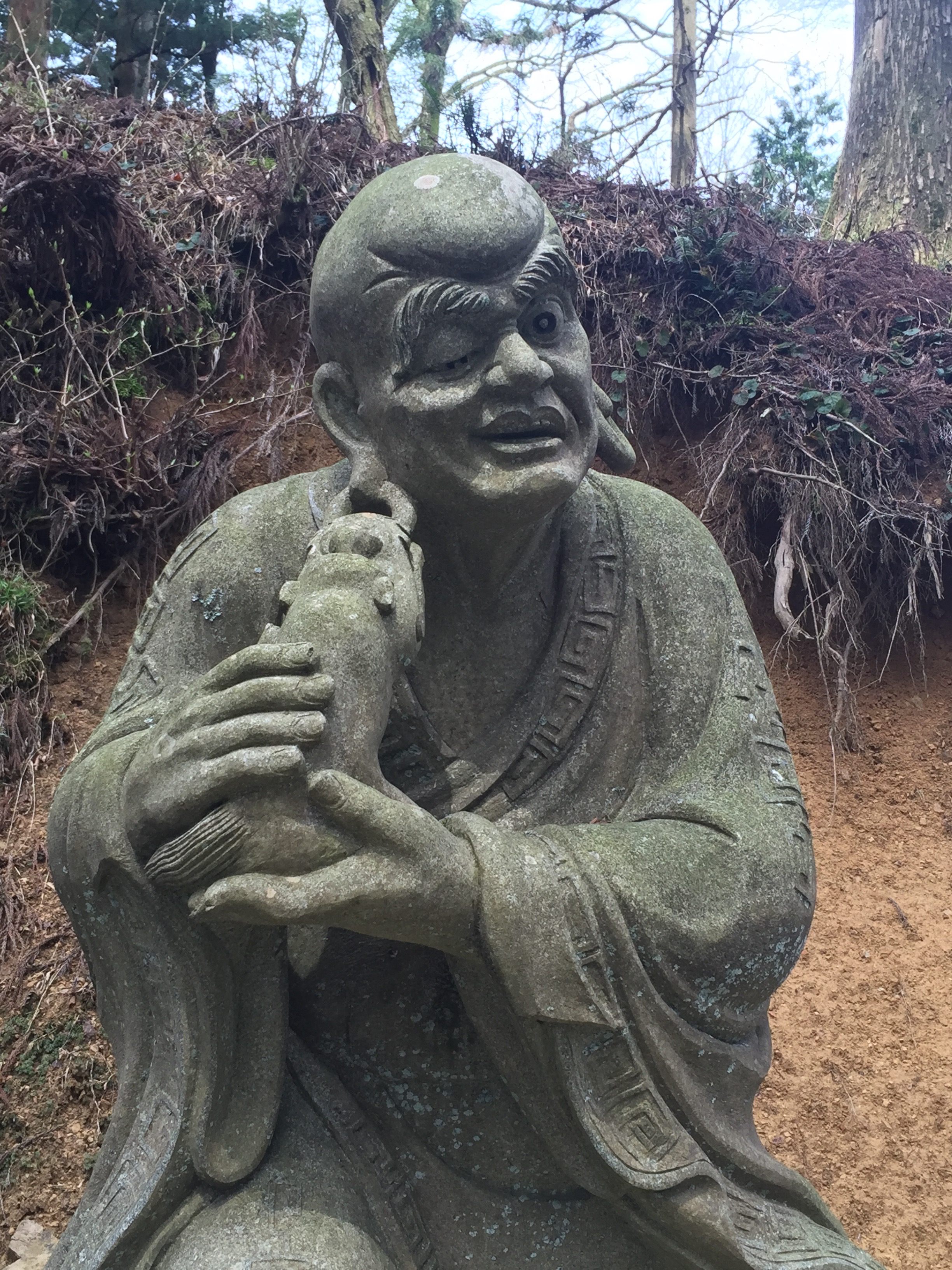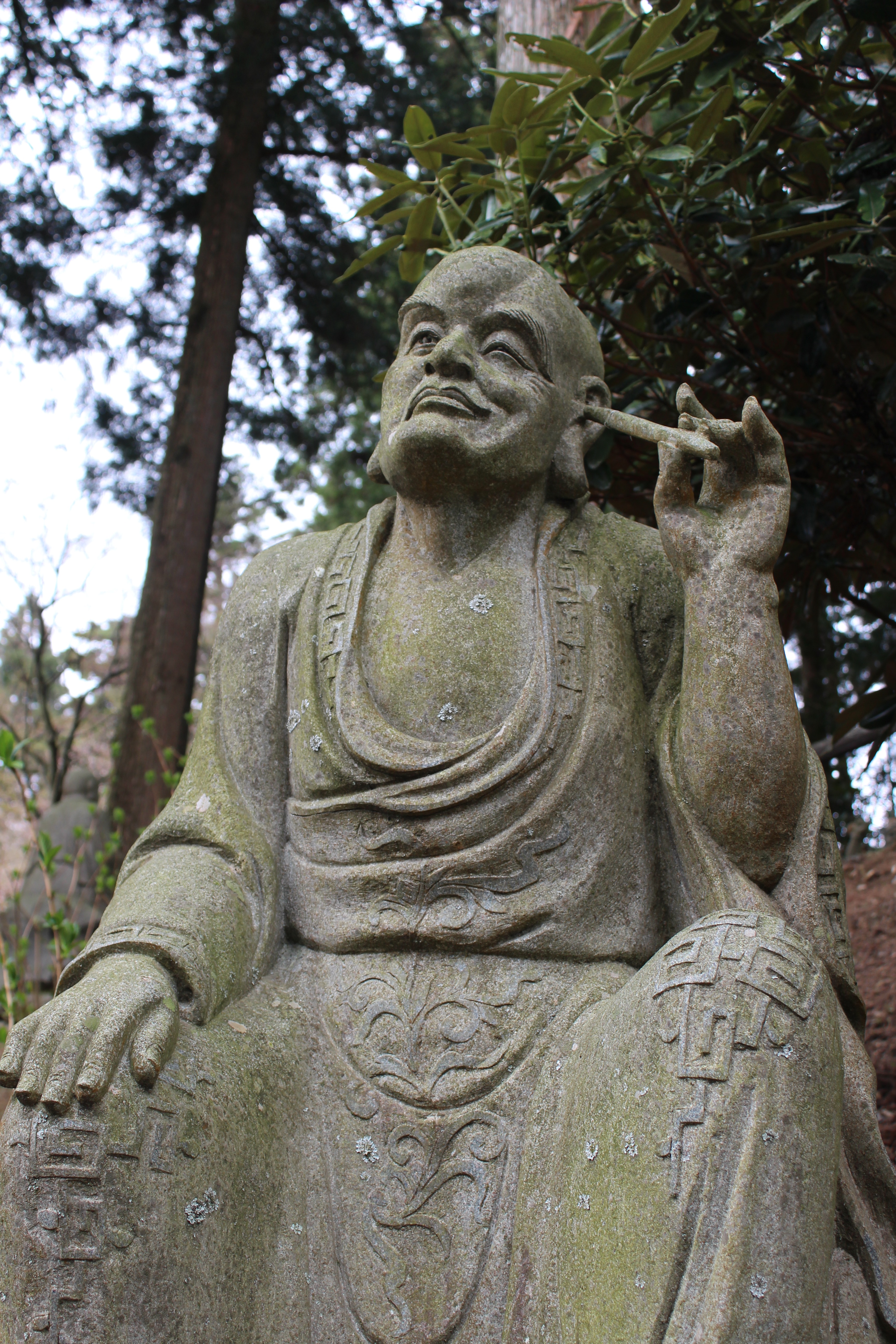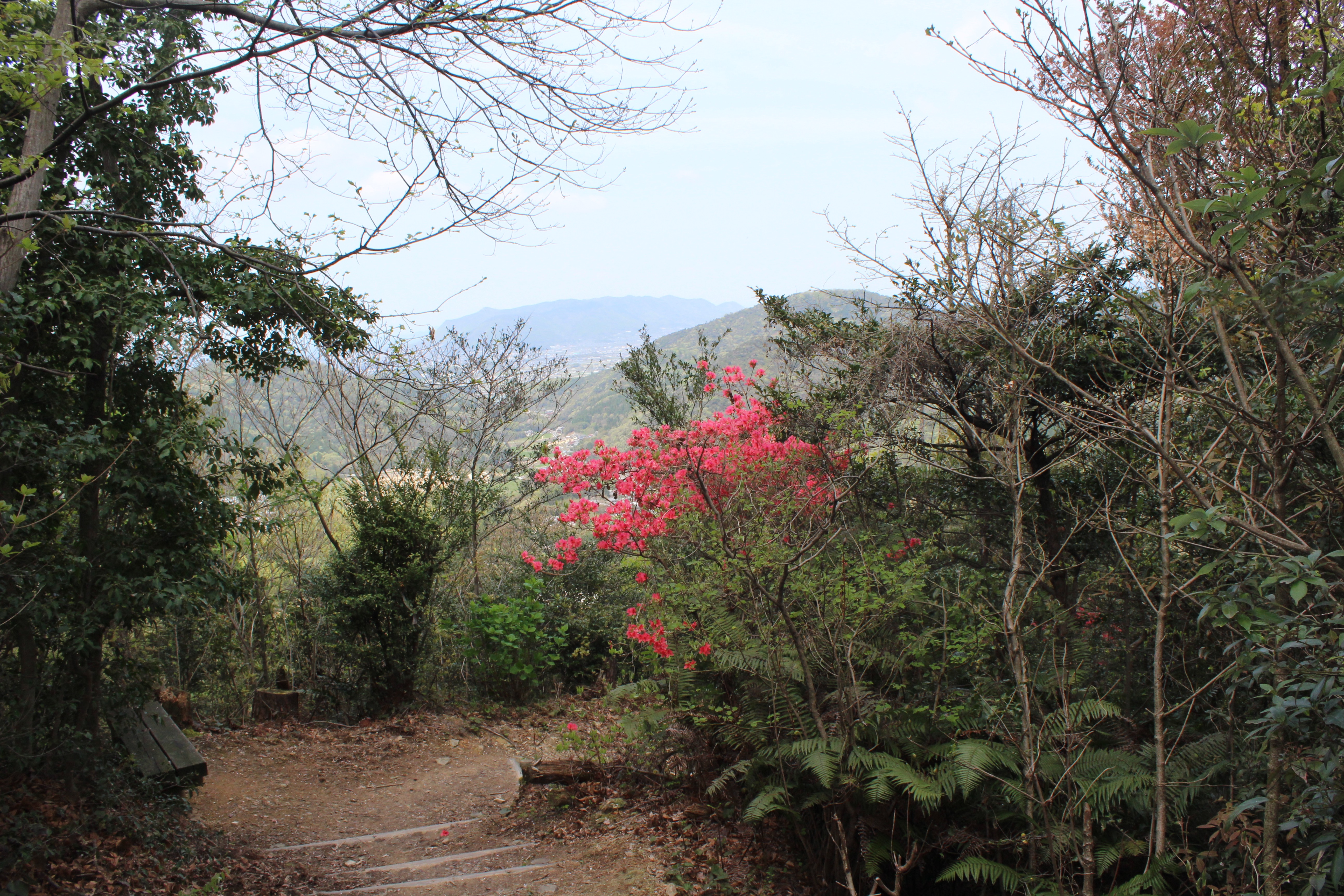Kagawa, Place of Nirvana (temples 66-88)
Go-hyaku-Rakan (500 Buddhist disciples), Unpenji, temple 66
It was hard to leave Zuiōji. I missed the monks and the harmonious way they lived
together. I was sad that a beautiful stage of my life was over. Sometimes I passed
parks with cherry trees where uncountable pink blossoms were covering the ground.
But like the new, green leaves sprouting out of the branches, new experiences were
waiting for me. I just was confronted with impermanence.
.
A man pruning his Bonsais
On the way up to Upenji (temple 66), I saw a peculiar resting place for pilgrims.
Unpenji is called the temple in the clouds and is the highest mountain temple of the
whole Shikoku pilgrimage (927 m). It was freezing cold when I arrived. The walk up
to the temple was mostly on a street that was not so steep.
The woman working in the fields near Unpenji wears the typical outfit of women
living in the countryside. Normally, the body (except face) is totally covered.
The view from Unpenji was spectacular. In the distance, Honshū (the main island of
Japan) was visible.
Entrance gate with bell to Unpenji
 Unpenji is famous for a huge eggplant sculpture. People can sit on, make a wish and
Unpenji is famous for a huge eggplant sculpture. People can sit on, make a wish and
hope that the wish will come true. The reason for the connection between eggplant
and wish fulfilling is explained by the word “nasu” which means eggplant as well as
the verb “accomplish, achieve or attain”.
For me, however, the most fascinating sculptures were the Rakans (or Arakans, from
Arahant), the 500 statues of Buddha’s first disciples. Their faces were incredible
humorous and expressive. It is said that one can look for a face most similar to his/
her own and get insight.
Start of the collection of 500 Rakans
The 9 km long path down to the coastal plains leads through forests with blooming
azaleas and agricultural land.
I especially loved a pond filled with lotus seeds and dried stems. Seeing the lotus
flowers in full bloom must be beautiful.
.
.
.

